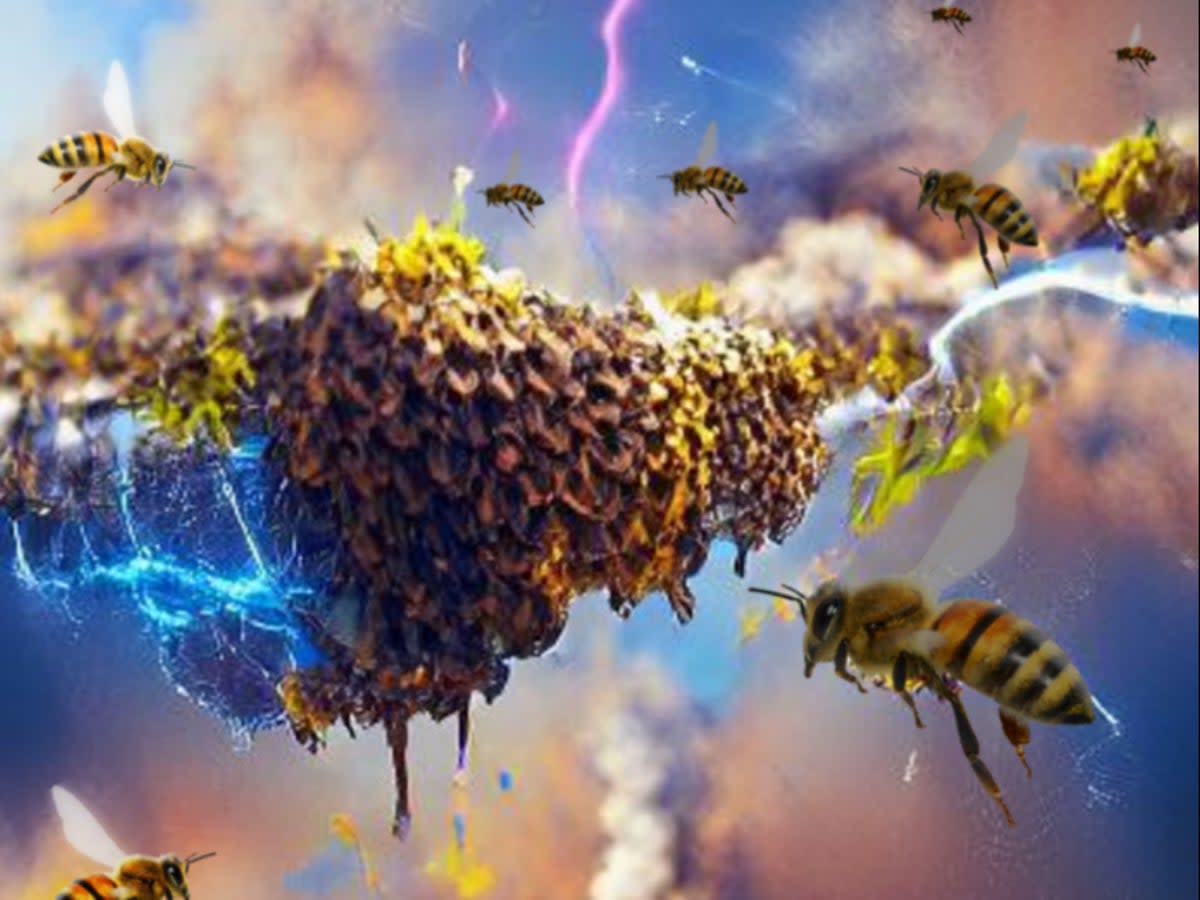Swarming insects can ‘produce as much electricity as thunderstorm clouds’

Swarming insects could produce as much atmospheric electric charge as a thunderstorm cloud, possibly influencing weather events and demonstrating a little-recognised link between organisms and electricity, breakthrough new research has found.
A research team at the University of Bristol said the insects can use their ability to interact with static electric fields to their advantage, helping species such as bees find food and allowing spiders to migrate considerable distances.
The research team measured the electrical fields near swarming honeybees and discovered that the swarms change the atmospheric electricity by 100 to 1,000 volts per metre, increasing the electric field force normally experienced at ground level, a similar change in atmospheric electric charge to that of a thunderstorm cloud.
“We always looked at how physics influenced biology, but at some point, we realised that biology might also be influencing physics,” said first author Dr Ellard Hunting, a biologist at the University of Bristol.
“We’re interested in how different organisms use the static electric fields that are virtually everywhere in the environment.”
He told The Independent that the static electric field “changes for a while if a bee has visited a flower.
“The next visiting bee could [detect] this and associate it with flowers that have little or no nectar present, and assist in their decision-making.”
Elsewhere, spiders’ silk threads contain a particular charge which can respond to the static electric fields and enable spiders to lift themselves into the sky, thereby migrating long distances.
The team then built a model which works out the changes to static electric fields for different insect species.
“How insect swarms influence atmospheric electricity depends on their density and size,” said co-author Liam O’Reilly, a biologist at the University of Bristol.
“We also calculated the influence of locusts on atmospheric electricity, as locusts swarm on biblical scales, sizing 460 square miles with 80 million locusts in less than a square mile.
“Their influence is likely much greater than honeybees,” he said.
Asked whether insects could feasibly impact the weather through the way they interact with electric fields, Dr Hunting said: “A weather radar is influenced by insects, charged or not. How it influences weather, we don’t really know.
“It really depends on which weather phenomena. For instance, insects will probably not influence major weather events like thunderstorms, but they could well be influencing local ion and aerosol dynamics, or perhaps influence clouds in otherwise clean areas.
“But it might be a butterfly effect, we don’t know, and that makes exploring the role of insects in the great atmospheric system worth investigating.”
A key element of the research was how the research team navigated a phenomenon crossing the divide between two branches of science – physics and biology.
“Interdisciplinarity is valuable here,” said co-author Giles Harrison, an atmospheric physicist from the University of Reading.
“Electric charge can seem like it lives solely in physics, but it is important to know how aware the whole natural world is of electricity in the atmosphere.”
Dr Hunting added: “We only recently discovered that biology and static electric fields are intimately linked and that there are many unsuspected links that can exist over different spatial scales, ranging from microbes in the soil and plant-pollinator interactions to insect swarms and the global electric circuit.
“This makes it an exciting new area of empirical research. The true implications of this remain speculative, and whether these dynamics induced by insects affect weather is worth investigating.”
The research is published in the journal iScience.

